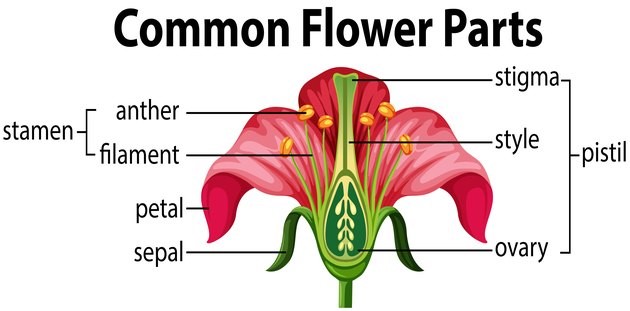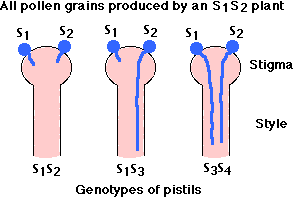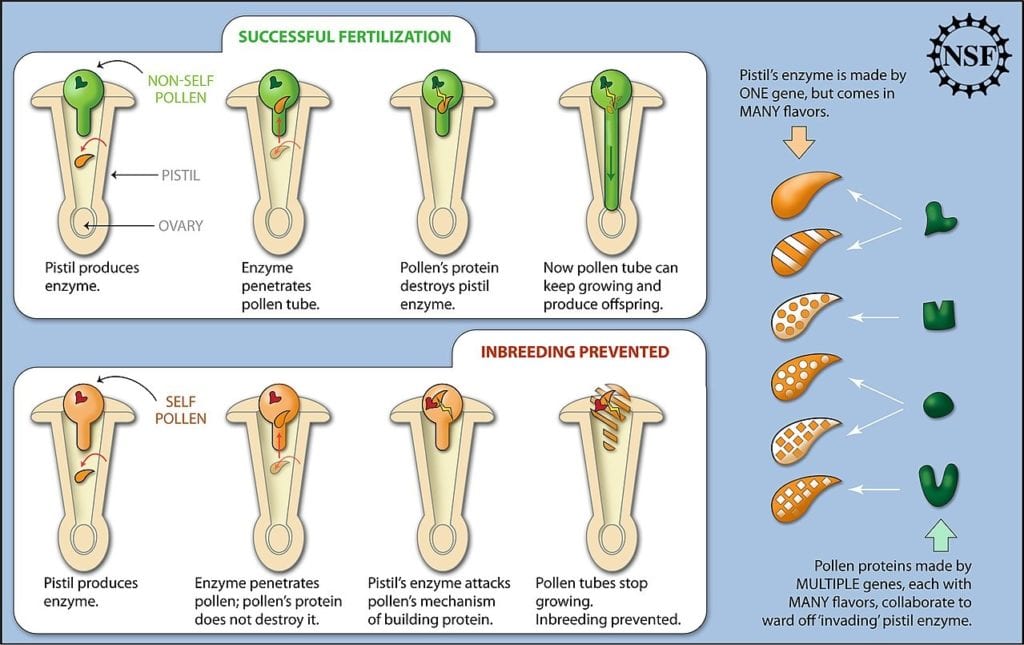Self-incompatibility
Biology Minute: Self-incompatibility
Flowering plants harbor a large amount of genetic diversity; so much so that they are the most diverse group of land plants. From an evolutionary standpoint, genetic diversity is favorable for the continued existence of a population. Populations that are able to adapt to changing environments are more likely to survive and persist for ongoing generations. This genetic diversity, however, would likely not exist without the mechanism known as self-incompatibility.
Self-incompatibility is when a flower has both male and female organs but is unable to successfully fertilize itself thus forcing the flower to outcross (using a genetically different pollen donor). A barrier to outcrossing is reproductive organ placement (Figure 1 below). Many flowers have male and female reproductive organs near each other which encourages self-fertilization, resulting in inbreeding. Inbreeding is commonly associated with negative effects, such as the passing of unfavorable genes between generations. To prevent this from occurring, mechanisms of self-incompatibility evolved to limit inbreeding within species, and promote new combinations of genes.
Figure 1: The common parts of a flower. The stamen, which includes the anther and filament is the male reproductive organ. The pistil, which includes the stigma, style, and ovary is the female reproductive organ. Anthers contain pollen, and the stigma is the part of the pistil where pollen germinates to begin the fertilization process.
Although some forms of incompatibility may be caused by morphological features (e.g. the arrangement of the pistil and anthers) or developmental timing (maturity of pollen or pistil), incompatibility may also occur on the molecular level, which has been observed in the Solanaceae family, specifically in tomatillo (Physalis ixocarpa).
This type of self-incompatibility is known as Gametophytic Self-Incompatibility (GSI). This mechanism is controlled by what is called the self-incompatibility or “S” gene that can be identified by certain DNA sequences. A gene can exist in multiple forms (or variants) known as alleles and in GSI these variants are the key to preventing self-fertilization.
In successful fertilization, pollen that has landed on the stigma germinates, growing a pollen tube that allows sperm cells from the pollen to travel down the style to the ovary for fertilization. In tomatillo, the presence of a specific S allele can help the plant identify if the pollen was from the same plant. If the pollen S allele is different from the pistil S alleles, the pollen tube will grow. If the pollen S allele matches that of the pistil “S” alleles, the growth of the pollen tube is halted, and the pollen never reaches the egg, thus preventing fertilization (Figure 2). This phenomenon occurs due to the presence of a ribonuclease (enzyme) that degrades the ribosomal RNA inside the pollen tube, preventing its growth, resulting in self-incompatibility (Figure 3).
Figure 2: Pistils are diploid, meaning they carry two copies of the allele, whereas pollen is haploid, only carrying one copy of the allele. The alleles must not match for successful fertilization to occur in GSI plants. S1, S2, S3, and S4 refer to different alleles (variants) of the S gene that the pollen grains carry. Diagram from http://www.biology-pages.info/S/SelfIncompatibilty.html. Figure 3: The mechanism that prevents self-fertilization in plants with GSI. The pistil produces an enzyme that can potentially damage the pollen tube. Proteins from genetically different pollen will be able to prevent the pistil enzyme from damaging the pollen tube, while proteins from self-pollen will not. Diagram credit: Zina Deretsky, National Science Foundation.

The presence of GSI in most varieties of tomatillo is why we recommend that you grow multiple plants when cultivating tomatillo. This is to ensure successful fertilization occurs and fruit

